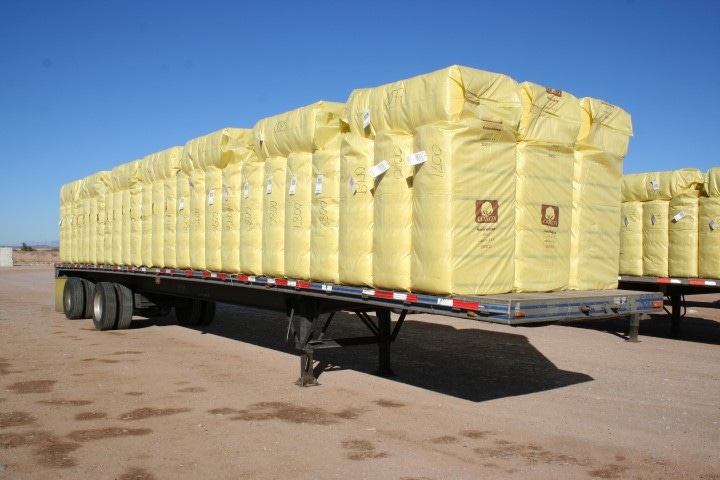
New technology is the key to survival for cotton ginners and the entire cotton industry, says USDA-ARS' Tommy Valco at Stoneville, Miss. Ginners should work with cotton breeders to ensure that good cotton varieties are brought to market which gin well and preserve fiber quality during the ginning process.
July 20, 2015

The official theme of the 2015 Arizona Cotton Conference held in June was “Survival,” amid a plethora of industry concerns including continued low cotton prices, wide fluctuations in planted acreage and related gin consolidation, crop competition, drought issues, and more.
Conference speaker and ginning specialist Tommy Valco at Stoneville, Miss. noted he had seen more serious times for cotton in his 40-year tenure in the U.S. cotton industry.
Valco began his cotton career as a student in 1972 working with the cotton module builder at Texas A&M University. Today, he is the technology transfer coordinator at the USDA-Agricultural Research Service at Stoneville.
“I’ve seen things go up and down. The current situation for cotton is not as bad as several we’ve survived previously,” Valco told the cotton industry crowd. “Today’s downturn is still very serious for the cotton industry.”
Valco discussed five ways for cotton ginners to survive these trying times, calling his list the “Top 5 Tips for Cotton Ginner Survival.”
1 – The adoption of new ginning technology
“We all know that new technology is the key to survival for cotton ginners and the entire cotton industry,” Valco said.
Work closely with breeders
He suggests that ginners work with cotton breeders to ensure that good cotton varieties are brought to market which gin well and preserve fiber quality during the ginning process. Small seed types increase seed losses which can create problems during ginning and reduce fiber quality.
2 – Education of management and workers
Gin safety, Valco says, is essential and should always be a high priority throughout the ginning process. Accidents can result in human injury and death, plus become a major financial risk to the gin’s financial livelihood.
“It’s always best to have a well trained staff and safe work environment,” the gin leader said.
A good place to learn the latest ideas on gin safety is at regional ginning meetings.
3 – Incorporation of best management practices
Utilizing BMPs are critical to every gin’s success, says Valco, including the monitoring and management of moisture throughout the ginning process. Many ginners prefer today’s round module hauling systems for ginning due to more consistent moisture content.
They should discuss the consequences of wet harvested cotton at the gin level with local growers, and urge the important of harvesting drier, low-moisture fiber.
Another key BMP involves monitoring air velocity and energy use in the gin. Proper air velocity and uniform feed rates help prevent ‘choke ups’ (slowdowns) in the ginning process. Choke ups also waste energy and can reduce the gin’s efficiency and competitiveness.
Maintenance critical
Equipment maintenance and adjustments are also critical. Dormant or down-season times are good opportunities to calibrate gin equipment to maximize efficiency down the road.
In drier climates in the Southwest and West, Valco recommends moisture restoration at the gin to add moisture to the bale to ensure the best cotton pressing. This also adds a little weight to the bale and reduces compressive forces on the press.
Another BMP is to stay on top of the gin’s environmental and regulatory requirements. A gin shutdown for not meeting regulations can be costly.
Grower-ginner relations are also important to reduce trash contamination in cotton.
“Plastic bags are a hazard in gins,” Valco explained.
“At our gin labs, we continue to research better ways to detect and remove contamination. The best way to prevent trash contamination at the gin is to stop plastic first at the farm level.”
Another BMP is to talk with growers about their production decisions. Cotton quality is influenced by the selected varieties, irrigation, crop termination, and defoliation. It is important for growers to make the best informed decisions to produce high quality cotton for ginning.
Valco said, “If a producer delivers a cotton module which inherently has poor fiber quality, high trash or moisture levels, or poor color, there is no magic a ginner can perform to improve the inevitable outcome.”
4 – More dollars for ginning research
The financial support of strong ginning research programs is critical at the three USDA-ARS’s three gin laboratories in Stoneville; Mesilla Park, N.M.; and Lubbock, Texas. Valco said additional funding dollars are needed to advance research to deliver better solutions to industry issues.
5 – Vertical integration of processing operations
As cotton acreage continues to shrink across the Cotton Belt, this in turn means less cotton delivered to a gin and the need for others streams of income. Valco says many gins continue to vertically integrate to generate more dollars for economic viability, including onsite warehousing and cottonseed storage.
For the latest on western agriculture, please check out Western Farm Press Daily and receive the latest news right to your inbox.
You May Also Like



